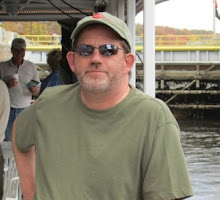KEVIN KELLER
Nocturnes
Kevin Keller Productions
Kevin Keller gave the members of his ensemble the night off,
as it were, and went solo on Nocturnes,
an exploration for solo piano that shows once again how Keller walks a
different path from many of his contemporaries. The music on Nocturnes is emotionally intense even
when at its most subtle, and is also intellectually intriguing. While the
album's pleasures can be had with casual listening, careful absorption of the
details and nuance will reap much richer listening rewards.
The inspiration for Nocturnes
was the work of photographer Seth Dickerman (http://sethdickerman.com/), who
describes his images as "metamorphic landscapes." The images are
captured in low light or moonlight and the surreal and colorful details come
alive in the dark room. Keller began each piece by selecting a photograph and
then weaving an impressionistic soundscape purely by how he reacted to the
particular photograph. Since his music was directly inspired by a specific image,
Keller titled each piece after its inspirational photograph. Mirroring
Dickerman's approach, once Keller was satisfied with the end result he took the
"finished" work and went about creating magic - by adding assorted
ambient elements, sometimes as rhythm, sometimes as echoed drones, and other
times as the natural elements of wind and waves.
Some tracks, like the opening "November," have
their effects front and center. On this piece, a mournful yet up-tempo piano
line is buoyed by a chattering rhythmic effect with a vague Doppler-esque sound
to it. The juxtaposition of tempo and tone is characteristic of some of the
tracks on Nocturnes, i.e. the pace of
the piece is counterbalanced by the gravity of melody. The opening notes of
"Pescadero" flow with sadness as Keller takes the refrain lower and
lower on the scale before settling into a neo-classical series of rolling
chords that ebb and flow from power to restraint. Even during the most rapid
tempo, Keller's emphasis on minor key notes lends the song an air of disquiet,
albeit of a beautiful nature. "Moonlit Headlands" is a sedate,
stately piece, with a pleasant meandering quality evoking a path that goes here
and there, but seldom in a straight line. "The Lost Father" brings
the sound of waves into the aural picture, as well as some subtle shimmering
tones. As befits the title, there is sadness here, but also drama and power,
the music's pace staying slow and purposeful. As the song ends, the piano
becomes faded and tinny, accompanied by the sound of a vinyl record scratching
and popping, suggesting we are hearing an older LP recording on a phonograph
somewhere.
"Hawi Moon" offers ambient textures deep in the
mix under a fast tempo piano refrain (on headphones, it sounds like there are
three different pianos at work here, so obviously there is some serious digital
work going on). As on some other tracks, despite a fast tempo, the mood is not
cheery but is peppered with an air of dramatic tension. "Sobrante"
features the only appearance of a guest artist (cellist Clarice Jensen), who
lends some serious gravitas to an already somber affair. "Sapphire
Pool" and "Trinity" descend even deeper into darkness, tilting
toward disquiet or one of the darker emotions. The concluding track, "Red
Headlands" ushers in on a sustaining low drone and minimal lower register
piano notes that sustain for long durations. Here, the mood is more
reflective. It's a great choice for the closing song as it sends the listener
off in a relaxed, contemplative state.
Nocturnes is available at Amazon and iTunes.


No comments:
Post a Comment